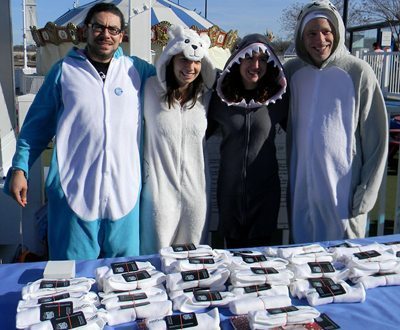No money? No time? No problem. How small, innovative start-ups can use values to grow their customer base
By Polina Pinchevsky | January 31, 2018
If you think you are too small to be effective, you have never been in bed with a mosquito.
—Unknown
Ever wonder:
- how your small start-up can raise awareness of your brand or products? Or,
- how to introduce your company to a new audience of value-aligned potential customers in order to build your community?
You need big budgets, big campaigns, and big agencies for this effort, right?
Big budgets never hurt… but for most start-ups, playing small and local will pay off big IF you dare to take a stand. We live in a world full of social problems, and smart companies are waking up to the fact that social activism is no longer just for nonprofits or individuals. (Click to Tweet!)
While big companies like Patagonia, Unilever and Ben & Jerry’s bring significant resources to causes they care about, but big resources are not a prerequisite to activism. An open mind, a sense of justice, passion for a social cause, and a spirit of adventure are the main ingredients needed to launch a brand activism campaign.
Want to unlock the power of Purpose? You need
Purpose-Driven: How to Take Your Company from Intent to Impact.
Purpose-Driven: How to Take Your Company from Intent to Impact.
Here’s an example of how a small, innovative start-up got involved in a local advocacy campaign and got in front of their ideal customers with minimum financial investment:
The challenge:
In early January, our client Neighborhood Sun came to us with a challenge. They are a community solar company and had just agreed to be a sponsor of the Polar Bear Plunge 2018.
The Polar Bear Plunge is an annual event where a group of otherwise perfectly sane people jump into the frigid cold waters of the Potomac river to raise money for the Chesapeake Climate Action Network (CCAN) and to raise awareness about climate change. As a company whose business is built on bringing solar power to everyone as a way to fight climate change, both the cause and the partnership made perfect sense for Neighborhood Sun.
First, Neighborhood Sun founder Gary wanted to know how to introduce his company to the other “plungers.” He asked, how can we engage with them? How can we encourage them to subscribe to our email list without being too “salesy?”
The Process:
 We asked lots of questions and assigned Neighborhood Sun homework: to come back with descriptions of the event vibe, reasons why people do it, and what emotions get stirred up at the event. We wanted to understand the mindset of this group of people who choose to jump into the Potomac in January.
We asked lots of questions and assigned Neighborhood Sun homework: to come back with descriptions of the event vibe, reasons why people do it, and what emotions get stirred up at the event. We wanted to understand the mindset of this group of people who choose to jump into the Potomac in January.
When we met again, we learned that this event has a carnival-like feel. Kids, dogs, stuffed animals, and people dressed in costumes all jump into the river. For many, it’s a family affair. It is a crowd of “dark greens” – folks who are deeply concerned about the climate and actively work for positive change. It was the perfect match to Neighborhood Sun’s ideal customer base, but one that had to be supported, not sold to.
The Polar Bear Plunge was a few weeks away, so there was neither time nor money to invest in a marketing blitz. We had to act fast, so a simple strategy was agreed on, focusing on three goals:
-
Introduce the company to this community.
Coordinate with the event organizer for postcards to be inserted into everyone’s registration envelope that focused on Neighborhood Sun’s participating team. To make sure they were easily spotted and recognized, company employees wore costumes – in the postcard photo and at the live event. They were dressed as animals threatened by climate change – a polar bear, a seal, and a narwal (the funny looking whale with a big horn). Hard to miss in a crowd, and lots of kids wanted photos with the polar bear. Did they get noticed? Oh yes! Did they fit in? Yes again! There were several other people in costumes, including other animals, and even a woman dressed as an abused mother-earth.
-
Share an experience and build trust.
We also agreed that with all the employees actually doing the plunge, the shared experience was built-in. But how could we enhance the shared experience? Neighborhood Sun wanted do a giveaway that was useful and thoughtful (remember these folks are a green bunch), but also unifying for all in attendance. Our inspiration came from the pink pussy hats at the Women’s March in 2017. It was quickly decided to make white beanies with the event hashtag #KeepWinterCold for free distribution before the plunge. As it turned out, the day was cold, the hats were cute, and they vanished fast. It was gratifying to look around at a sea of white hats.
-
Build potential customer email list.
Neighborhood Sun knew plunge participants spent many previous weeks raising money and asking friends/family for pledge donations. What better way to get their attention then to contribute $5 to CCAN for every person who shares their email? Win-win – it’s a fundraiser after all! To get this message out, the postcards, hat labels, and a unique event webpage (made in-house to stay on budget) clearly stated this commitment.
And that’s it! It was simple, inexpensive (the whole campaign was under $5K), and a quick way for a small start-up to connect to like minded people, all deeply concerned about the climate and motivated to do something about it. That’s exactly the kind of customers Neighborhood Sun is after.
Marketing to such a specific group via traditional channels is expensive. But sharing an experience and taking a stand together is memorable and fun, leading to trust and results. That’s what brand activism is all about. Though big efforts like Ben & Jerry’s campaign to overturn the bathroom bill are critical, brand activism can simply be hyper local action within a community that shares passion for an issue. For lean start-ups, starting small, keeping it local, and going all in pays off.
When you know where your company and your customer’s values align, it becomes easy to find the right nonprofit partners, worthy causes, brand advocates and get s***t done. Oh yes, and grow your business along the way.
By the way, over $120K was raised that morning for CCAN. And the 200 #KeepWinterCold beanies were gone in a blink!
Ready to empower your customers to be your brand advocates? Learn how to Build a Community of Supporters for Your Brand today!




What a great case study – so creative!